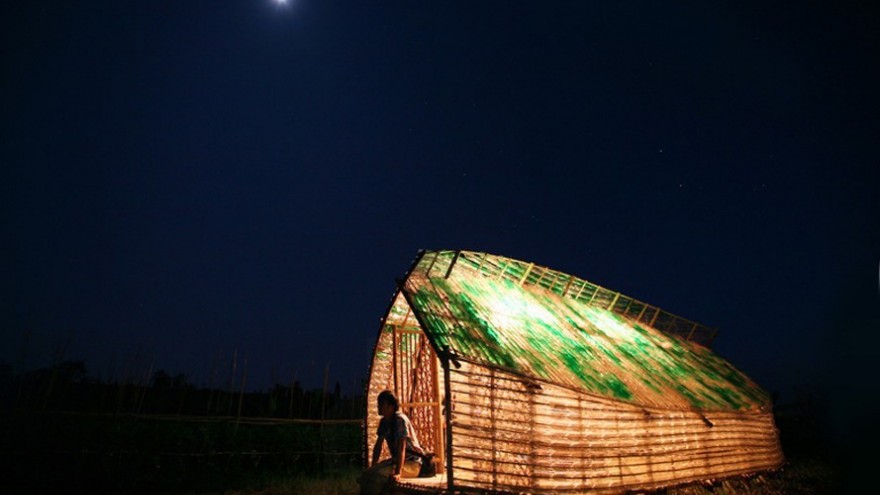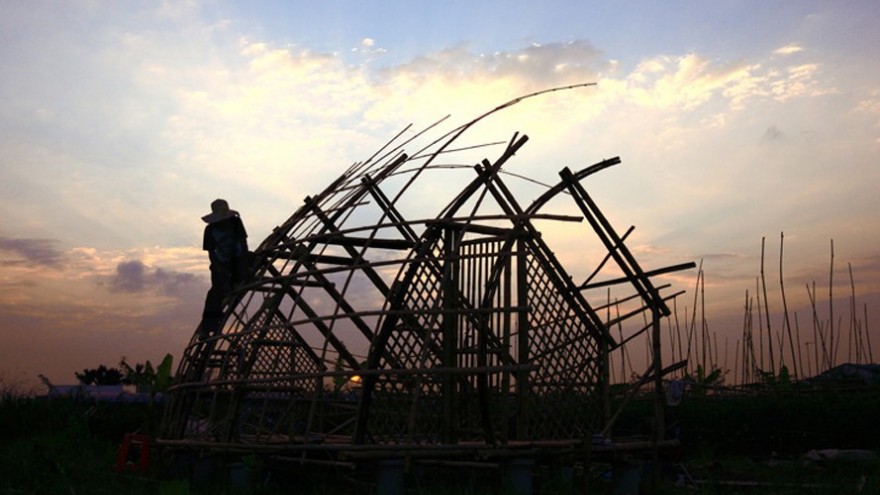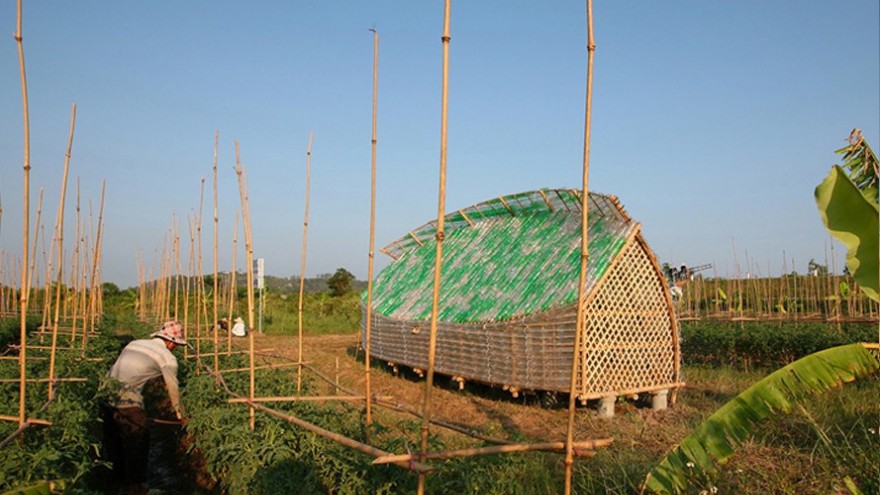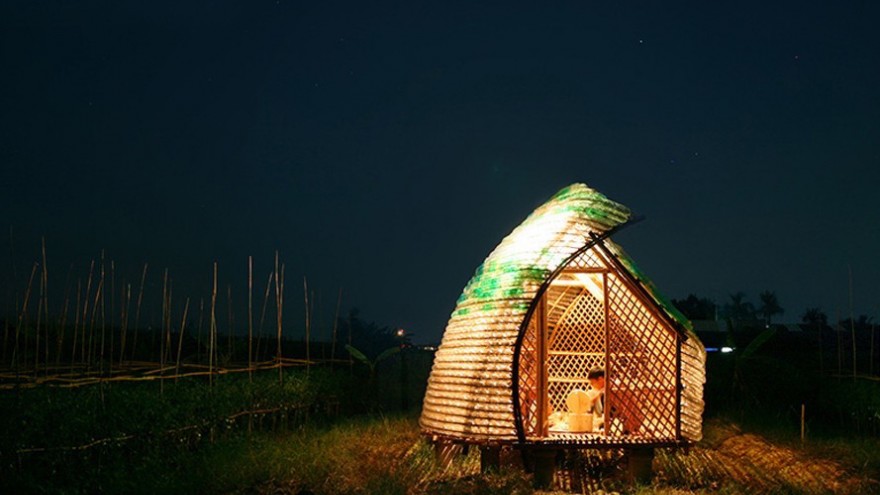Big plans for rural development in the north east region of Vietnam are under way. With the help of the Japan International Cooperation Agency, the province of Ha Giang has just pledged to build transport, irrigation and water-supplying facilities in its rural areas. Not far below Ha Giang, in a rural village in the coastal province of Hai Phong, this movement for development continues in the form of a multipurpose shelter designed to improve the quality of life for a rural community affected by HIV/AIDS.
The shelter, called Bottle Seedling House is designed by Vietnam-based architecture and design firm 1+1>2 International Architecture JSC, in collaboration with the Centre for Community Health and Development (COHED). The primary function of the shelters is to store and protect farmer’s seedlings but the overarching aim is that the structures become community-based spaces where outcast residents living with HIV/AIDS can be reintegrated into social circles.
The architects’ vision for the Bottle Seedling House is to join the community with a “neutral ground” open to everyone. The houses, located between small-hold farms, can be used by farmers as a place to rest during a day’s work, or students as an after-school clubhouse or the community as a gathering area.
The actual design of the house had to consider the location of the village, which receives an average of 12 typhoons every year. To withstand these extreme weather conditions, the bamboo frame shelters were secured deep into the ground with concrete pipe foundations. The roofs of the shelter were each built from 3000 plastic bottles, pierced with bamboo poles and tightly stacked together. The shelter is able to protect approximately 10 000 tomato seedlings per season.









